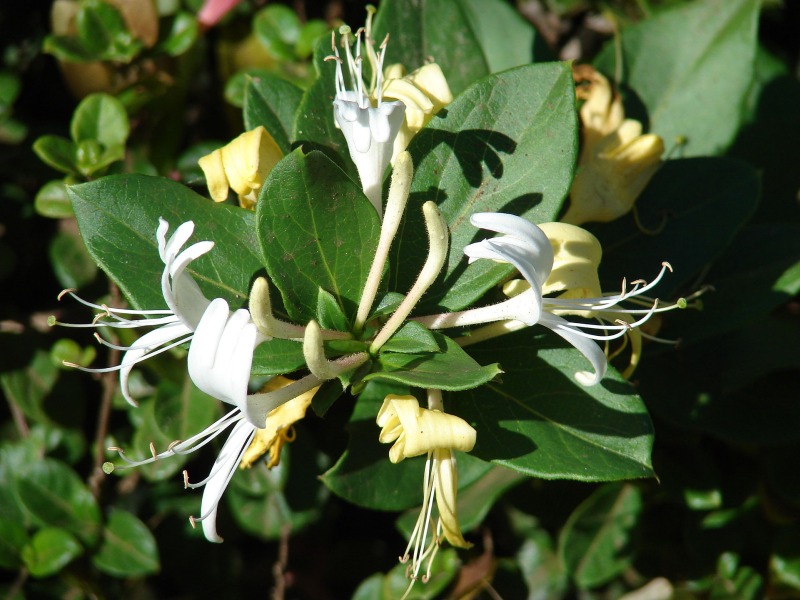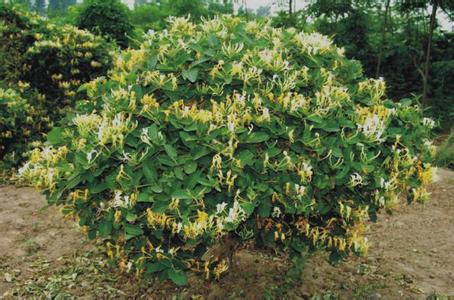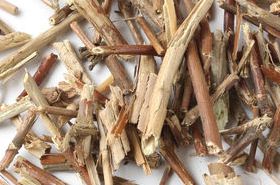-
Invasion of the Qi system by
pathogenic Heat- use with Gypsum and Anemarrhena rhizome.
- Sores, carbuncles, furuncles and swellings- use with
Dandelion
and Viola herb.
- Diarrhea and dysentery due to intense Toxic Heat- use with
Scutellaria
baicalensis- Huang qin,
Coptis chinensis-
Huang lian and
Pulsatilla chinensis-
Pulsatilla root, or used to prepare a concentrated decoction for frequent drinking.
- Diarrhea and dysentery- Can use Jin jin hua by itself or combine with
Scutellaria
baicalensis- Huang qin,
Artemisia capillaris-
Yin chen,
Paeonia lactiflora- Bai shao.
[5]
- Externally contracted Wind Heat, with
Schizonepeta
tenuifolia- Jing jie and
Mentha arvensis-
Bo he.
[6]
- Summer Heat fever without sweating, with
Elsholtzia
splendens- Xiang ru and
Dolichos lablab-
Bian dou.
[6]
- Unremitting high fever, with
Scutellaria
baicalensis- Huang qin and
Coptis chinensis-
Huang lian.
[6]
- Blotchiness cuased by Heat Toxin in epidemic heat diseases, with
Isatis
tinctoria- Da qing ye and
Lithospermum
erythrorhizon- Zi cao.
[6]
- Pain and swelling of the throat, with
Platycodon
grandiflorus- Jie geng and
Arctium lappa-
Niu bang zi.
[6]
- Suppurating boils that have not ulcerated, or have ulcerated but are not discharging
the pus, with
Scutellaria baicalensis-
Huang qin.
[6]
[1] Barefoot Doctor's Manual- 1977 Prepared by the Revolutionary Health Committee
of Hunan Province. Original Chinese manual- Victor W. Sidel. Originally published
by Dr Joseph Quin and the Fogarty International centre, Bethdesda (1974). Madrona
Publishers Seattle Washington ISBN 0-914842-52-8
[2] A Complete English Dictionary of Medicinal Terms in Chinese Acupuncture
and Herbalism 1981- Henry Lu Chinese Foundations of Natural Health- The Academy
of Oriental Heritage, Vancouver, Canada.
[3] Medicated Diet of Traditional Chinese Medicine- Chief Editor- Hou Jinglun.
Associate Editors- Zhao Xin, Li Weidong, Liu Jianxin, Geng Chun-e, Li Guohua,
Li Shaohua. Geijing. Science & Technology Press 1994. ISBN 7-5304-1735-5/R.
309.
[4] The Chinese Materia Medica A practical English- Chinese Library of Traditional
Chinese Medicine Publishing House of Shanghai University of Traditional Chinese
Medicine. Director Hu Ximing ISBN 7-81010-111-X/R-110
[5] Translation notes from Gary Seiford and Hocu Huhn- NSW College of Natural
Therapies. Sydney Australia (1982).
[6] Chinese Herbal Medicine Materia Medica- Dan Bensky and Andrew Gamble- Eastland
Press 1986 Seattle Washington ISBN 0-939616-15-7
Images
1.
de.wikipedia.org
Hochgeladen von BotMultichillT CC BY 3.0
2.
old.tcmwiki.com
3.
[1]
4.
zhongyaoyi.com
5.
chinatimes.com
by Xie Jiaxuan
6.
zyk.99.com.cn HABITAT:
HABITAT:  Lonicera
japonica. 金
银- Jīn
yín Honeysuckle
Family: Caprifoliaceae
Lonicera
japonica. 金
银- Jīn
yín Honeysuckle
Family: Caprifoliaceae




 HABITAT: Found
growing in moist areas or cultivated.
HABITAT: Found
growing in moist areas or cultivated.